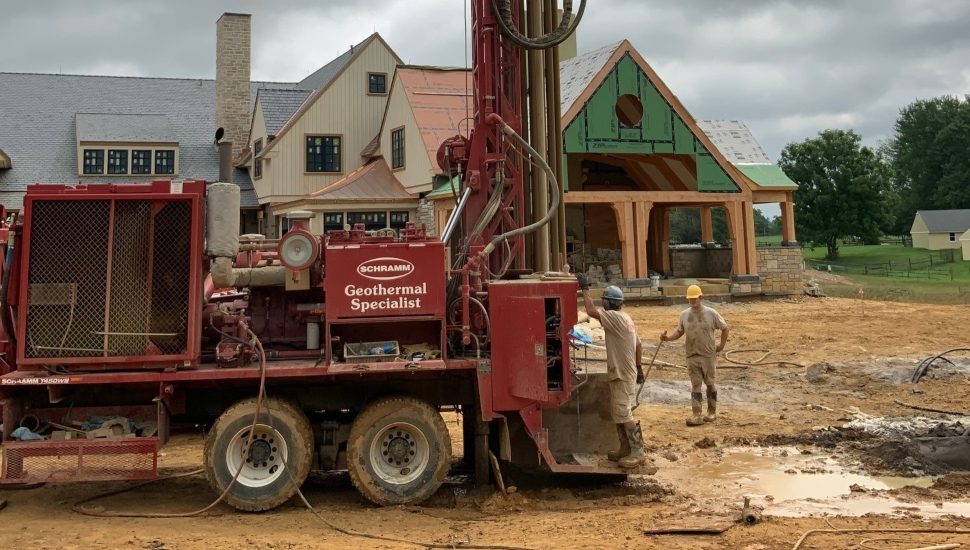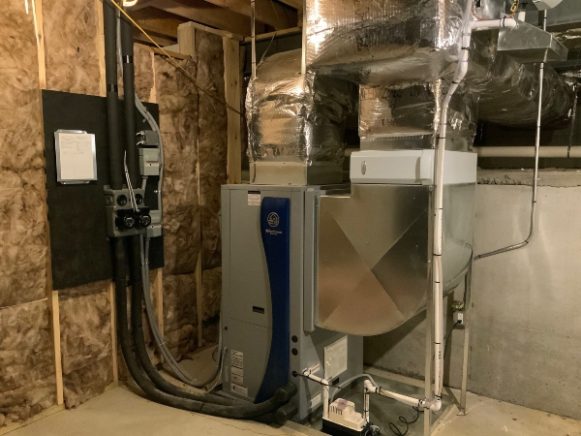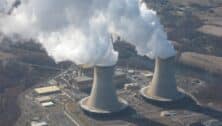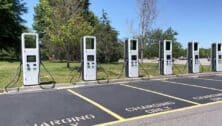Trade Group Led by Owner of Brandywine Valley HVAC Aims for Advancement of Geothermal Heating, Cooling


Anyone in the HVAC industry will tell you that geothermal heating and cooling is not just the sleeping giant of renewable energy, but also essential for us to meet the challenges of the 21st century. The problem is, in Pennsylvania, geothermal energy is not recognized as renewable energy.
Even the federal government, through the Consolidated Appropriations Act of 2021, has modified the definition of renewable energy to include thermal energy. It also changed the word “generated” to “produced,” thus eliminating the argument that geothermal technology does not generate power and therefore is not renewable energy.
Furthermore, the Act states that “any energy consumption that is avoided through the use of geothermal energy shall be considered to be renewable energy produced.”
So, if the feds recognize thermal energy as renewable, why doesn’t Pennsylvania?
A nonprofit trade organization called the Pennsylvania Geothermal Heat Pump Association (PA-Geo) formed in 2019 to increase the visibility and understanding of geothermal heat pumps (GHPs).
Recently, PA-Geo met virtually with State Sen. Carolyn Comitta, a renowned champion of the environment and the minority chairwoman of the Senate Environmental Resources and Energy Committee, to advocate for the advancement of geothermal technology in Pennsylvania.

PA-Geo’s founding members are residential and commercial geothermal professionals and subject matter experts who, combined, boast more than a century of experience. Bill Ronayne, the owner of Brandywine Valley Heating & Air Conditioning, is the President of PA-Geo. He installed his first GHP system in 1978.
GHP systems use the thermal properties of the Earth, in conjunction with electricity, to provide space conditioning and water heating to facilities. Here’s how they work:
GHP technology transfers heat between the steady temperature of the Earth and a building to maintain the building space conditions. Below the surface of the Earth, the temperature remains relatively constant. This stable temperature provides a source for heat in the winter and a means to reject excess heat in the summer. In a GHP system, a fluid (typically water) is circulated between the building and the ground loop piping buried in the ground. In the summer, the fluid picks up heat from the building and moves it to the ground. In the winter, the fluid picks up heat from the ground and moves it to the building. Heat pumps in the building make this transfer of heat possible.

“It’s a 40-year-old, new technology,” said Ronayne. “The reason that geothermal hasn’t been wildly successful is because of the cost of the ground loop, which adds an extra $10,000-$15,000 to a system. They’re highly efficient and low maintenance, but you have to live in a house for eight to 10 years to realize the savings.”
Unless a utility company or other third party owned the ground loop, which could be amortized by charging the homeowner a nominal fee each month.
If Pennsylvania modified its definition of renewable energy to include thermal energy, like the federal government has, ground loops would quickly become attractive assets to utilities or third parties.
“We are moving toward a world with reduced carbon emissions,” said Jack DiEnna, PA-Geo’s Executive Vice President, “and there’s no doubt that geothermal heating and cooling is one of the greatest weapons against greenhouse gas emissions.”
Several factors play a role in the movement for Pennsylvania to recognize GHP systems as renewable-energy technology: government policy, utility goals, corporate citizenship, environmental stewardship, price and supply stability, cost savings, and more.
States that recognize the ground loop as a renewable thermal asset are Maryland, New York, Massachusetts, New Hampshire, Utah, and New Mexico. In Maryland and New York, the ground loop also qualifies for Renewable Energy Credits.
PA-Geo has taken its appeal to State Sen. Comitta, who supports Pennsylvania’s participation in the Regional Greenhouse Gas Initiative (RGGI) and updating the state’s Alternative Energy Portfolio Standards Act. RGGI is a cooperative effort among 10 Mid-Atlantic and New England states to cap and reduce carbon dioxide emissions from the power sector. Pennsylvania is not a member but anticipates becoming one in 2022.
“Protecting our environment and safeguarding our natural resources is a tremendous responsibility, one that I deeply respect and continue to hold near and dear to my heart,” Comitta said. “Every day, we are reminded that we only get one planet and that our environment has significant and long-standing impacts on our public health, safety, economy, and nearly every aspect of life in our communities.”
Learn more about the Pennsylvania Geothermal Heat Pump Association.
Connect With Your Community
Subscribe to stay informed!
"*" indicates required fields











































![95000-1023_ACJ_BannerAd[1]](https://vista.today/wp-content/uploads/2023/03/95000-1023_ACJ_BannerAd1.jpg)




